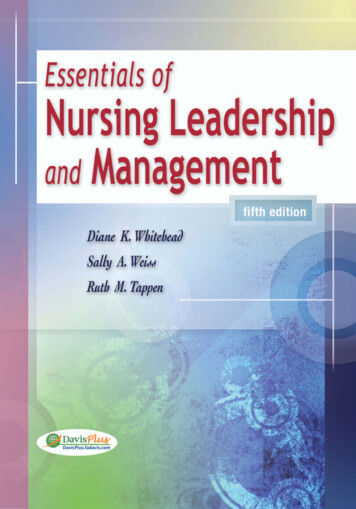
Transcription
ﻛﻴﻒ ﲡﺘﺎﺯ ﺍﻣﺘﺤﺎﻧﺎﺕ ﺍﻟﺒﻨﻮﻙ ﺳﻠﻴﻤﺎﻥ ﺳﻌﻴﺪ ﺑﻨﻚ ﻣﺼﺮ ٠١٠٠٨٤٩٨٨٠٣ تحذير يحظر تماما ً طبع أو نشر أو استغالل ھذا العمل بأى شكل او أى صورة للحصول علي عائد مادى . ھذا العمل لوجه ﷲ تعالي . آال ھل بلغت ؟ . اللھم فإشھد
ð]‚{{{âc î{{Öc æ áçÏËßè Ú áæ‚« àè„Ö] êÖc ê{{{Ö] JJJ H áç{{{ÏËßè æ áæ‚{{{« àè„{{Ö] J š ] îÊ áçe„ù] ‚éÉ á Ûé ‰
í{{Ú‚ÏÚ ş {Û Â ä{éÊ ‹Ûj è ş Ïè† Ø㉠àÚ {¹æ H í{ß ] ê{Ö] äÏè† äÖ ] Ø㉠{ßâ à{ÛÊ ì† {Þ Ü{ ÃÖ] ì Ò‡ kÞ Ò kÖ„{eæ H ŠÞ sãßÖ] ]„â ê  æ H ‚fÞ ] ç{{ã h {{jÓÖ] ]„{{â ]‚{{Â] » áç{{ÓéÖ å† {{Þ] áû]æ ] ] ä{{Û Ãè ä{é  ÜÓ ò{‰] Úæ íè q í΂‘ J ] ê  ] ë†q] á] †q] àÚ@@ á Ûé ‰ ‚éÉ á Ûé ‰ NLMM ]ƒa
I Œ†{{ã{{Ë{{Ö] I íÚ‚ÏÚ Iíèˆé ý] íÇ Ö e íf‰ ] JMl Úç ÃÚ Ý ¿ßÒ íf‰ ] JNíèˆé ] íÇ Ö e íéf‰ l Ëè†Ãi JO ãj ÃÚ Ñ† æ íÚæ‚ù] áçè‚Ö] JPÕøâ ] JQ â ]‚Â] íéËéÒæ íè‚ÏßÖ] l Ë΂jÖ] íÛñ Î JRíée†ÃÖ] íÇ Ö e íf‰ ] JSêËé¾çÖ] Ìé‘çjÖ] JT í‘ çfÖ] » Ûnj‰ý] ô fÚ I ãÚ ŠÎ æ ÕçßfÖ] ô fÚ I ’jÎý] l é‰ ‰] IÐèçŠjÖ] » íÚ‚ÏÚ I Ûnj‰ý]æ ØèçÛjÖ] l é è ô fÚ I Þ æ †’Ú Ôße JJJ Úçè †  íéÞ æ íñ Ú I
The Accounting Information SystemThe system of collecting and processing transaction data to financial information is knownas the accounting information system.The Accounting Cycle SummarizedA summary of the steps in the accounting cycle shows a logical sequence of the accountingprocedures used during a fiscal period:1. Enter the transactions of the period in appropriate journals.2. Post from the journals to the ledger (or ledgers).3. Take an unadjusted trial balance (trial balance).4. Prepare adjusting journal entries and post to the ledger(s).5. Take a trial balance after adjusting (adjusted trial balance).6. Prepare the financial statements from the second trial balance.7. Prepare closing journal entries and post to the ledger(s).8. Take a trial balance after closing (post-closing trial balance).9. Prepare reversing entries (optional) and post to the ledger(s).This list of procedures constitutes a complete accounting cycle that is normally performed inevery fiscal period.1Identifying and Recording Transactions and Other EventsThe first step in the accounting cycle is analysis of transactions and selected otherevents. The problem is to determine what to record. No simple rules exist that state whether anevent should be recorded. Most agree that changes in personnel, changes in managerialpolicies, and the value of human resources, though important, should not be recorded in theaccounts. On the other hand, when the company makes a cash sale or purchase—no matterhow small—it should be recorded. The phrase “transactions and other events andcircumstances that affect a business enterprise” is used to describe the sources or causes ofchanges in an entity’s assets, li-abilities, and equity. Events are of two types:(1) External events involve interaction between an entity and its environment, such asa transaction with another entity, a change in the price of a good or service that an entity buysor sells a flood or earth-Quake or an improvement in technology by a competitor.2) Internal events occur within an entity, such as using buildings and machinery inoperations or transferring or consuming raw materials in production processes. Many eventshave both external and internal elements. For example, acquiring the services of employees orothers involves exchange transactions, which are external events. Using those services (labor),often simultaneously with their acquisition, is part of production, which is internal. Eventsmay be initiated and controlled by an entity, such as the purchase of merchandise or the use ofa machine. Or they may be beyond its control, such as an interest rate change, a theft orvandalism, or the imposition of taxes. Transactions, as particular kinds of external events, maybe an exchange in which each entity both receives and sacrifices value, such as purchases andsales of goods or services. Or transactions may be transfers in one direction in which an entityincurs a liability or transfers an asset to another entity without directly receiving (or giving)value in exchange. Examples include investments by owners, distributions to owners, paymentof taxes, gifts, charitable contributions, casualty losses, and thefts. In short, as many events aspossible that affect the financial position of the enterprise are recorded. Some events areomitted because of tradition and others because the problems of measuring them are toocomplex. The accounting profession in recent years has shown signs of breaking with age-oldtraditions and is more receptive than ever to accepting the challenge of measuring andreporting events and phenomena previously viewed as too complex and immeasurable.
1. JournalizingDiffering effects on the basic business elements (assets, liabilities, and equities) arecategorized and collected in accounts. The general ledger is a collection of all the asset,liability, stockholders’ equity, revenue, and expense accounts. A T-account (as shown inIllustration 3-8, on page 71) is a convenient method of illustrating the effect of transactions onparticular asset, liability, equity, revenue, and expense items.2. PostingThe items entered in a general journal must be transferred to the general ledger. Thisprocedure, posting, is part of the summarizing and classifying process.3. Trial BalanceA trial balance is a list of accounts and their balances at a given time. Customarily, atrial balance is prepared at the end of an accounting period. The accounts are listed in theorder in which they appear in the ledger, with debit balances listed in the left column andcredit balances in the right column. The totals of the two columns must be in agreement. Theprimary purpose of a trial balance is to prove the mathematical equality of debits and creditsafter posting4. Adjusting EntriesIn order for revenues to be recorded in the period in which they are earned, and forexpenses to be recognized in the period in which they are incurred, adjusting entries are madeat the end of the accounting period. In short, adjustments are needed to ensure that the revenuerecognition and matching principles are followed.Types of Adjusting EntriesAdjusting entries can be classified as either prepayments or accruals. Each of these classes hastwo subcategories as shown below.5. Adjusted Trial BalanceAfter all adjusting entries have been journalized and posted; another trial balance isprepared from the ledger accounts. This trial balance is called an adjusted trial balance. It
shows the balance of all accounts, including those that have been adjusted, at the end of theaccounting period. The purpose of an adjusted trial balance is to show the effects of allfinancial events that have occurred during the accounting period.6. ClosingThe procedure generally followed to reduce the balance of nominal (temporary(accounts to zero in order to prepare the accounts for the next period’s transactions is known asthe closing process.These revenue accounts would be closed and the balances transferred by the following closingjournal entry.Sales RevenuexxxRental RevenuexxxInterest RevenuexxxIncome Summary xxx(To close revenue accounts to Income Summary)-These expense accounts would be closed and the balances transferred through the followingclosing journal entry.Income SummaryxxxCost of Goods SoldSelling ExpensesGeneral and Administrative ExpensesInterest ExpenseIncome Tax Expensexxxxxxxxxxxxxxx(To close expense accounts to Income Summary)DEPRECIATION1. STRAIGHT-LINE DEPRECIATIONIt is calculated by subtracting an asset’s expected salvage value from its capitalized cost,and then dividing this amount by the estimated life of the asset. For example, a candy wrappermachine has a cost of 40,000 and an expected salvage value of 8,000. It is expected to be inservice for eight years. Given these assumptions, its annual depreciation expense is: (Cost – salvage value) /number of years in service ( 40,000 – 8,000) /8 years 32,000/8 years 4,000 depreciation per year2. DOUBLE DECLINING BALANCE DEPRECIATIONThe double declining balance method (DDB) is the most aggressive depreciationmethod for recognizing the bulk of the expense toward the beginning of an asset’s useful life.To calculate it, determine the straight-line depreciation for an asset for its first year (see the
last section for the straight-line calculation). Then double this amount, which yields thedepreciation for the first year. Then subtract the first-year depreciation from the asset cost(using no salvage value deduction), and run the same calculation again for the next year.Continue to use this methodology for the useful life of the asset. For example, a dry cleaningmachine costing 20,000 is estimated to have a useful life of six years. Under the straight-linemethod, it would have depreciation of 3,333 per year. Consequently, the first year ofdepreciation under the 200% DDB method would be double that amount, or 6,667. Thecalculation for all six years of depreciation is noted in Exhibit.Basic Assumptions ﻓﺮﻭﺽ ﺍﶈﺎﺳﺒﺔ ﻛﻨﻈﺮﻳﺔ ﻭﺃﻱ ﻧﻈﺮﻳﺔ ﺗﻘﻮﻡ ﻋﻠﻲ ﻓﺮﺿﻴﺎﺕ Four basic assumptions underlie the financial accounting structure: (1) economic entity, (2)going concern, (3) monetary unit, and (4) periodicity.1. Economic Entity Assumption Any business enterprise is an Accounting Uniteseparate from its owners.2. Going Concern Assumption that the business enterprise will have a long life3. Monetary Unit Assumption The monetary unit assumption means that money is thecommon way of economic activity and used for accounting measurement.4. Periodicity Assumption the economic activities of an enterprise can be divided intoperiods.5.Basic Principles of Accounting ﻣﺒﺎﺩﺉ ﺍﶈﺎﺳﺒﺔ Four basic principles of accounting are used to record transactions: (1) historical cost (2)revenue recognition, (3) matching, and (4) full disclosure. ﺍﻹﻓﺼﺎﺡ ﺍﻟﻜﺎﻣﻞ / ﺍﳌﻘﺎﺑﻠﺔ / ﺍﻻﻋﺘﺮﺍﻑ ﺑﺎﻹﻳﺮﺍﺩ / ﺍﻟﺘﻜﻠﻔﺔ ﺍﻟﺘﺎﺭﳜﻴﺔ : ﺍﳌﺒﺎﺩﺉ ﻫﻲ 1. Historical costmeans the assets and liabilities are recorded at their historical(acquisition) ﺍﻻﻗﺘﻨﺎﺀ price.2. Revenue Recognition Principle Revenue is generally recognized (1) when realizedand (2) when earned3. The matching principle means (expenses) be matched with (revenues) whenever it isoccurred.
4. Full Disclosure Principle In deciding what information to report, the general practiceof providing information that is of sufficient importance to influence the judgment anddecisions of an informed user are followed. Often referred to as the full disclosureprincipleEnglish accounting definitions Accountingis the process of recording, classifying, and reporting the financial data. Accounting entity Any business enterprise is an Accounting Unite separate from itsowners Historical cost means the assets are recorded at their historical price Assets are the economic resources of the firm such as lands, machine inventory Account is an element in Accounting System used to classify the business activity Charts of accounts Is a list of all accounts in general ledger Compound journal entry a journal entry with one or more than debit or credit Every transaction recorded in an entry that has equal debit and credit Notes is a written promise to pay for anther an amount of money in a specific date Types of accounts Real accounts it's the balance sheet accounts like assets liabilities Nominal accounts it's the income statement accounts like expenses and revenuesaccounts. Personal accounts it's the withdraws accounts Income statement prepared to measures the net profit or net loss of the company in aspecific period Balance sheet statement shows the financial position of the company for a certain date Cash flow statement shows the reaction of cash in and cash out of the company forspecific period. Working capital equal current assets – current liabilities Investment capital equal long term assets plus working capital Trial balance the sum of the debit side entry and the credit side entryGross profit net sales – cost of sold goodsNet profit revenues – expensesCurrent AssetsAre the cash and the other Assets expected to be converted into cash either in One Yearor in the operating cycle.
Current LiabilitiesAre the obligations that are expected to be paid through one year. Like Accounts payable.LiabilityA financial obligation or the cash outlay that must be made at a specific time to satisfy thecontractual terms of such A/RLong term liabilitiesAre the obligations that are expected to be paid through more than one year.Fixed Assets (F/a)Land, buildings, plant, equipment, and other assets acquired for carrying on the business ofa company with a life exceeding one year. Normally expressed in financial accounts at cost,less accumulated depreciation.Accounts payableA current liability on the balance sheet, representing short-term obligations to pay suppliersAccounts receivableA current asset on the balance sheet, representing short-term amounts due from customerswho have purchased on account.Accrual accountingThe recording of revenue when earned and expenses whenIncurred, irrespective of the dates on which the associated cash flows occur.Accumulated depreciationThe sum total of all deprecation expense recognized todate on a depreciable fixed asset.AmortizationThe write-off of an asset over the period when the asset is used. This term most commonlyapplied to the gradual write-down of intangible items, such as goodwill or organizationalcosts.JOURNAL :1234-The book of original entry where are recorded consists of four partsdebitedcreditedDateAn explanationInventory is Hold for sale and Inventory valuation and cost flow methods is:1- First in, First out (FIFO)2- Last in, last out (LIFO)3- Market price4- CostLast-in, first-outAn inventory costing methodology that bases the recognized cost of sales on the most recentcosts incurred, w
2. Going Concern Assumption that the business enterprise will have a long life 3. Monetary Unit Assumption The monetary unit assumption means that money is the common way of economic activity and used for accounting measurement. 4. Periodicity Assumption the economic activities of an enterprise can be divided into periods. 5.











